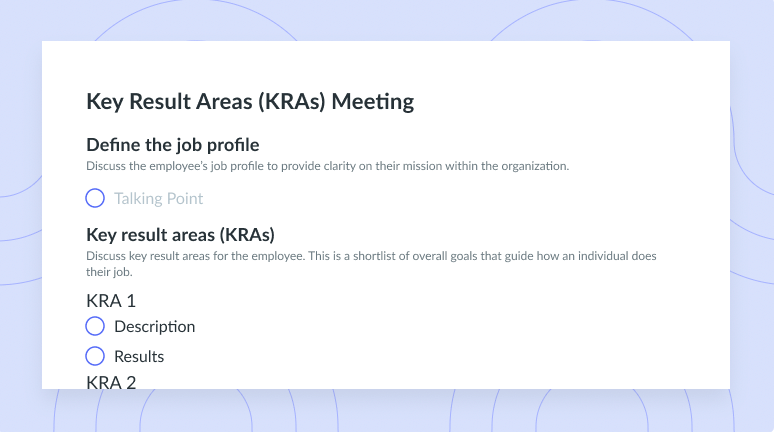Understanding the Silo Work Environment
Learn all about a silo work environment, the reasons these environments occur, and how you and your team can avoid and overcome silos here.
There is a reason the whole is greater than the sum of its parts. When teams choose to collaborate to achieve a common goal, amazing things can be achieved. Considering that any organization is composed of unique individuals with different skill sets, experience, and expertise, companies can leverage their team diversity through cross-team collaboration. When efforts are aligned, teams can work with a unified vision to attain organizational goals and find great successes.
One major obstacle that may get in the way of effective team collaboration is a silo work environment. When teams engage in a silo mentality, it means that certain people withhold information from other colleagues or the organization as a whole. Ultimately, this creates a divide in the workforce. So that you and your team can overcome silos and this silo mentality, this article will cover everything you need to know to prevent a silo work environment.
- What is a silo work environment?
- What causes workplace silos?
- Different types of workplace silos
- What happens when teams work in silos?
- How to prevent silos at work
What is a silo work environment?
Working in silos means that team members or an entire team that has acquired important information choose to keep it from others. A silo mindset damages a company’s culture by creating a visible divide between team members since those with this mindset are choosing not to share the wealth of knowledge acquired that could be hugely beneficial to others and could help the team achieve its goals with more ease. As such, in the long term, teams have great difficulty hitting their objectives and key results (OKRs).

Create a culture of continuous communication
A well-run meeting fosters communication and collaboration to avoid workplace silos by including an agenda the whole team can contribute to. Try using a tool like Fellow!

What causes workplace silos?
Workplace silos often occur because of a lack of understanding of how other teams or departments within the same company operate and how these teams fit into the bigger picture. Rather than focusing on company-wide objectives, some leaders focus their teams on their specific team goals. Because it can be a challenge to explain team goals to other departments, silos are created because of the effort required to share knowledge throughout the entire organization. These silos can stump productivity and hinder the company from achieving its larger, more ambitious goals.
Different types of workplace silos
1Geographical silos
- Cultural differences
Cultural differences can create significant workplace silos. Some people work in a structured, data-oriented manner and others work more creatively. These differences can divide your workforce and ultimately lead to employees working in silos with others whose working styles are more similar to their own.
- Time zone differences
Different time zones can also account for geographical silos because they make communication and collaboration more challenging. Since you can’t always work with your colleagues in real time, it’s essential that you and your team find an effective way to collaborate asynchronously so everyone remains up to date and aligned with how to approach project management, and can complete tasks successfully.
- Language barriers
For international or multinational organizations, language barriers can also cause difficulties with aligning and collaborating on larger, overarching company goals. These barriers create an obstacle to translating emails, work, comments, and feedback from other team members in different parts of the world. It’s important to invest in tools and technologies that are effective in translating text so you can ensure that everyone is on the same page.
- Technology barriers
A silo work environment can also arise due to technology barriers when employees are working in several different locations. Interruptions and complications due to bad internet connections or limited access to equipment can lead to interruptions to the flow of information and make communicating and disseminating information frustrating and difficult.
2Departmental silos
- Differences in team cultures
Departmental silos like differences in team cultures within the same organization can also cause disruptions to the flow of information. Because each team has its own particular communication style, working with other departments or teams can become a challenge. When individuals aren’t used to working in a particular way, it becomes tough to acquire information and to become aligned.
- Poor cross-departmental communication
Poor cross-departmental communication also leads to a silo work environment. It’s a good idea to store and share your information in one space so there aren’t any gaps in accessing important information or documentation. Using a tool like Fellow, you can access all of your meeting notes and action items in one place. You can also try this great cross-functional meeting template to improve communication between departments and encourage better collaboration.

- Insufficient training in new methods
Insufficient training or different standards of training across departments can also cause a silo work environment. It’s essential that leaders and management as a whole are aligned on the expectations and requirements for training across the entire organization to create a certain level of consistency and competency. Whenever new methods are introduced, make sure that company-wide training and information sessions are held so every department is aligned.
- Use of multiple tools instead of one company-wide tool
Another reason a silo environment or silo mentality may develop is because an organization is choosing to use multiple tools or technologies. When processes and systems differ from team to team, this can cause inconsistencies and create barriers to achieving goals that require a collective effort.
3Hierarchy silos
- Lack of top-down feedback
Hierarchical silos such as a lack of top-down feedback can hold the team back from being aligned and working collaboratively. There need to be clear structures in place to ensure that those in leadership positions are clearly communicating their thoughts, decisions, and feedback to ensure that the entire workforce is aligned. Company-wide meetings, even if they’re asynchronous, can be an effective way of communicating information from the executive team.
- Unclear expectations from management
Unclear expectations from management can also create a silo work environment. Ambiguity can lead to large differences in the way that employees approach tasks and projects, creating inconsistencies and knowledge gaps. This is why it’s so important to set clear expectations with all departments so your entire workforce is aligned. To set expectations effectively, you can use this template on setting expectations so you’re confident that everyone is on the same page.

4Partnership silos
- Lack of communication on the progress of tasks
Partnership silos may arise due to a lack of communication on the progress of tasks. It’s essential that a management system is used so you can effectively communicate updates and decisions that have been made. Using a meeting management tool like Fellow, you can track progress and your team members’ progress on OKRs. This way, you can ensure that everyone is on track to meet organizational goals.
- Workflow differences
Workflow differences can also account for partnership silos. Differences like using private servers versus having everything on the cloud where it’s accessible to everyone across all departments—as well as to authorized clients, customers, and partners—can make the flow of information more effective and cause less of a divide. This will improve the customer experience and external consultation efforts.
- Poor remote communication
Poor remote communication is another reason silo work environments can arise. Ensure that you’re establishing expectations around remote working and that you have the tools and resources available to ensure people are up to date and in the know about tasks and projects.
What happens when teams work in silos?
- Unclear expectations
Unclear expectations arise as a result of teams working in silos. While individual teams or departments may be aware of what they’re working on and which goals they’re looking to fulfill, there is often a lack of understanding on what the expectations are to work towards larger, more monumental organizational goals.
- Other departments are blamed for mistakes
When teams work with a silo mentality, they often blame other departments for mistakes that are made. The division between teams creates an unwillingness to take ownership when things go wrong because the teams see their work as separate from that of other teams. Rather than the teams coming together, this causes further separation.
- Inefficient use of resources
When teams aren’t using their resources effectively or in alignment with other teams, a silo work environment persists. Teams become complacent as they choose to not use the resources and progress becomes minimal. The inefficient use of resources also leads to no one willing to be held accountable or take responsibility for the lag in progress.
How to prevent silos at work
The priority of any organization should be to place a huge importance on collaboration and alignment, to break down silos and come together to share information in an effective manner that’s accessible to everyone. To prevent silos at work, it’s essential to encourage efficient remote team-building and collaboration exercises so people become more comfortable working with their colleagues and so you can foster trust. You also need to work on promoting effective cross-departmental collaboration so team members become more familiar with the way other teams are working to achieve their more local goals. This broadens everyone’s understanding of the organization.
Parting advice
An essential part of organizational success is ensuring teams are working together with a clear vision on how to achieve success together, as a unified workforce with a unified vision. Whether you’re part of a sales department, engineering team, corporate finance group, or you’re in marketing, alignment is essential for success, and divisions across teams will only cause barriers and delays in achieving company goals. Be sure to establish a collaborative company culture which places a focus on cross-team training and partnerships across all departments.














![Incoming Client Interview [Legal Clinic] Template](https://fellow.app/wp-content/uploads/2021/09/Incoming-Client-Interview-Legal-Clinic-preview.png)













